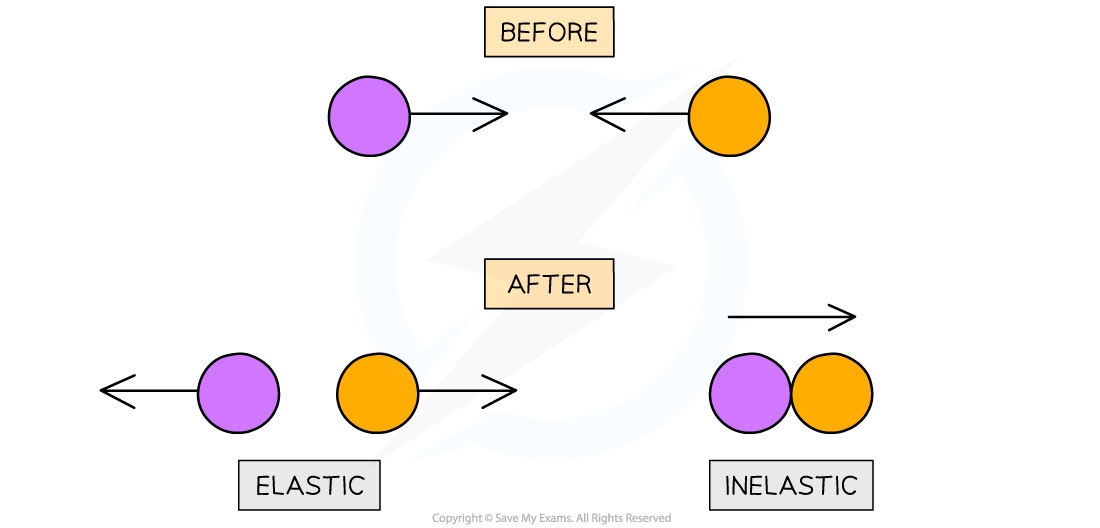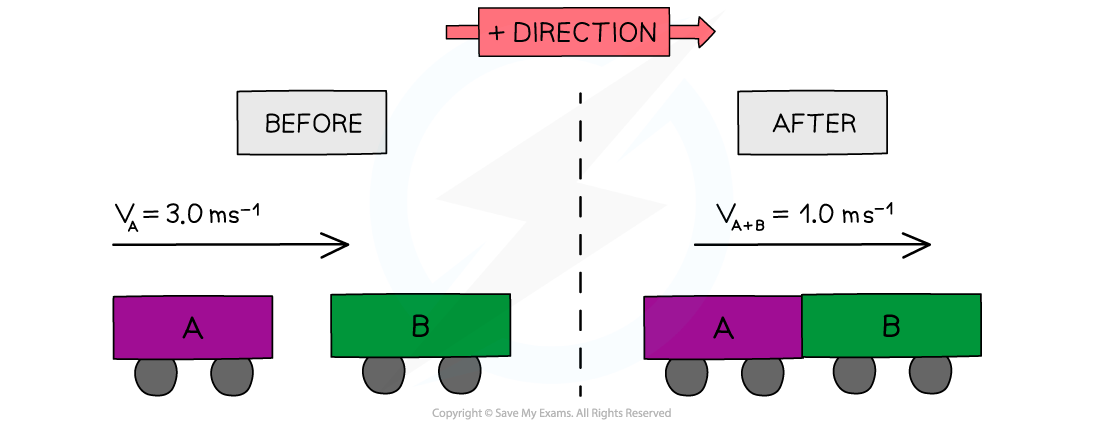Collisions in One & Two Dimensions
One-dimensional Problems
- Momentum (p) is equal to: p = m × v
- One-dimensional momentum problems are when collisions are taken place in just the x (horizontal) or just the y (vertical) direction
- Using the conservation of linear momentum, it is possible to calculate missing velocities and masses of components in the system
- This is shown in the example below:
Worked example
Trolley A of mass 0.80 kg collides head-on with stationary trolley B at a velocity of 3.0 ms-1.Trolley B has twice the mass of trolley A.The trolleys stick together. Using the conservation of momentum, calculate the common velocity of both trolleys after the collision. Determine whether this is an elastic or inelastic collision.


Two-dimensional Momentum Problems
- Since momentum is a vector, in 2D it can be split up into its x and y components
- Two-dimensional momentum problems are when collisions are taken place in both the x (horizontal) and the y (vertical) direction
- Using the conversation of linear momentum as well as resolving vectors, it is possible to calculate changes in momentum
- This is shown in the example below:
Worked example
A ball is thrown at a vertical wall. The path of the ball is shown below The ball is thrown from S with an initial velocity of 15.0 m s-1 at 60.0° to the horizontal. The mass of the ball is 60 × 10-3 kg and rebounds at a velocity of 4.6 m s-1.Calculate the change in momentum of the ball if it rebounds off the wall at P.
The ball is thrown from S with an initial velocity of 15.0 m s-1 at 60.0° to the horizontal. The mass of the ball is 60 × 10-3 kg and rebounds at a velocity of 4.6 m s-1.Calculate the change in momentum of the ball if it rebounds off the wall at P.

Exam Tip
If an object is stationary or at rest, it’s velocity equals 0, therefore, the momentum and kinetic energy are also equal to 0.When a collision occurs in which two objects are stuck together, treat the final object as a single object with a mass equal to the sum of the two individual objects.In 2D problems, make sure you’re confident resolving vectors. Here is a small trick to remember which component is cosine or sine of the angle for a vector R:
Resolving vectors with sine and cosine





